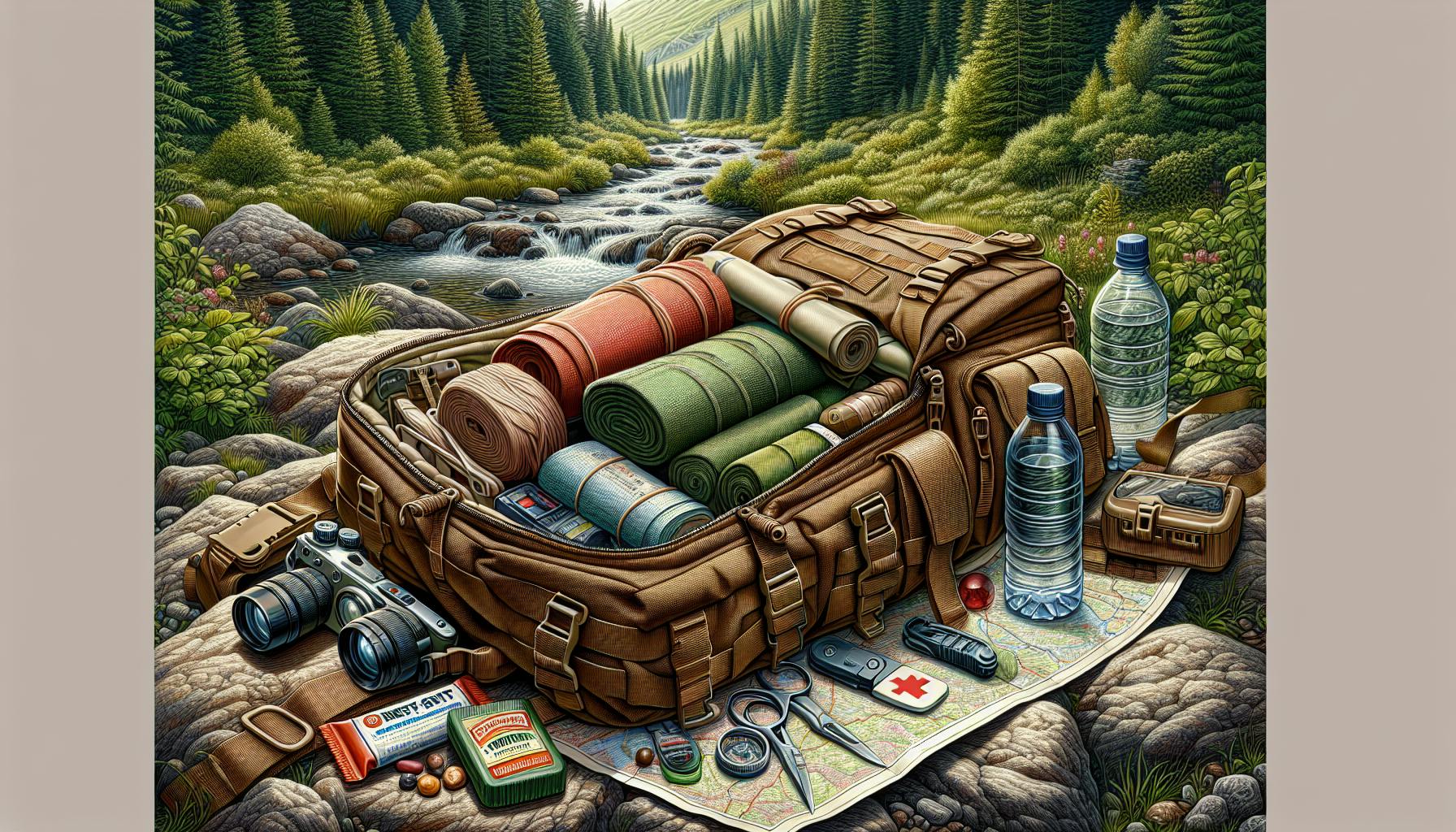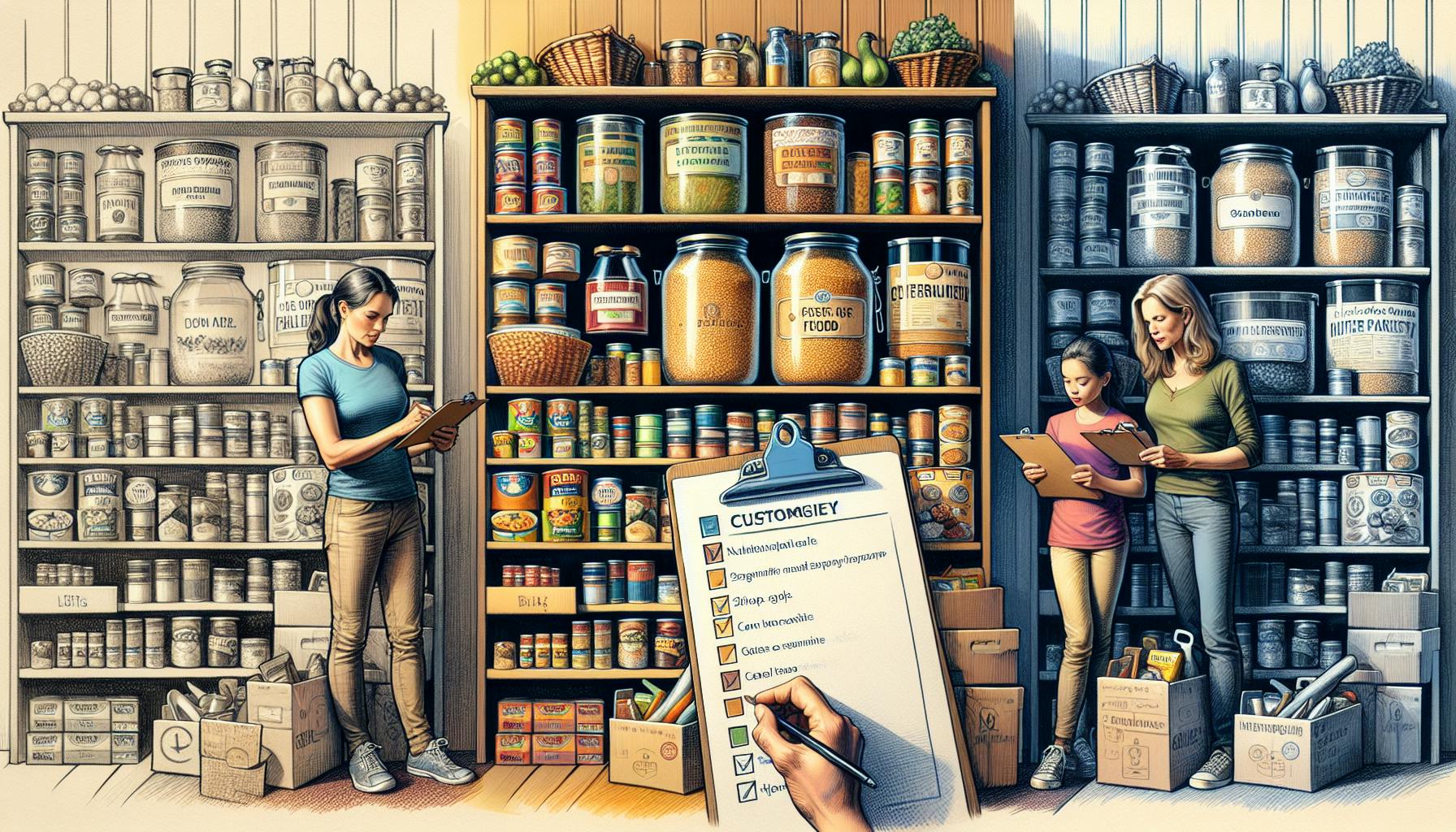Being prepared with a well-stocked food pantry is one of the most important aspects of emergency readiness. Having a surplus of shelf-stable foods and water on hand provides peace of mind and ensures your family will be fed nutritious meals during a crisis. This comprehensive article will cover the essential items every prepper’s food pantry should contain, with a focus on nutritional balance, long shelf life, and ease of preparation when the grid is down.
Introduction
When an emergency strikes, access to fresh foods can quickly be cut off, whether due to power outages, supply chain disruptions, or isolation during a pandemic. Maintaining a deep pantry of non-perishable foods and supplies takes the stress out of unexpected events and provides security knowing you have everything you need to keep your family fed until the crisis passes.
The goal of this article is to provide a detailed prepper food pantry list to help you stock up on the right foods and key supplies. We’ll cover all the basics, from shelf-stable staples like rice, beans, canned goods, and drinking water, to cooking equipment, vitamins, and medications. Having a balanced stockpile with nutrient-dense foods across the nutritional spectrum will keep you nourished and healthy when the grocery stores are bare.
Let’s get started building out your prepper’s pantry with the fundamental food staples.
Shelf-Stable Food Staples
The bulk of your deep pantry should comprise shelf-stable basics that deliver sufficient calories, macronutrients, vitamins, and minerals. Prioritize non-perishable foods with a long shelf life that your family already eats and enjoys.
Grains
- Rice – white, brown, jasmine, basmati, long grain. Rice is versatile and lasts up to 30 years if stored properly in airtight containers.
- Pasta – spaghetti, macaroni, rotini, lasagna noodles. Dried pasta has a long shelf life if kept dry and cool.
- Oats – quick oats, steel cut oats, oat flour. Highly nutritious and affordable bulk item.
- Quinoa – high protein grain that's easy and quick to make. Store in sealed bags or jars.
- Beans – dried varieties like kidney, pinto, black beans store well in cool, dark places. Excellent source of plant-based protein.
- Lentils – high fiber and protein. Cook up fast. Use oxygen absorbers to prolong shelf life.
- Barley – hearty grain perfect for soups and stews. Store in food-grade plastic buckets.
Fruits and Vegetables
- Canned fruits – peaches, pears, pineapple, applesauce. Look for those packed in juice rather than heavy syrup.
- Canned tomatoes – diced, crushed, sauce, paste. Endless meal possibilities.
- Canned beans – black, pinto, kidney, garbanzo. Nutritious plant-based protein.
- Canned vegetables – carrots, peas, mixed veggies, green beans. Look for low sodium options.
- Canned soups – chicken noodle, tomato, vegetable soups. Comfort food.
- Vegetable juices – V8, tomato juice. Nutrient dense.
- Beef and chicken canned meats. High protein options.
Fats and Oils
- Olive oil – for cooking and dressings. Store in a cool, dark place to prevent rancidity.
- Coconut oil – high smoke point makes it perfect for frying. Long shelf life up to 2 years.
- Vegetable oil – neutral flavor works well in many dishes. Freeze for prolonged shelf life.
- Butter/ghee – adds flavor and calories. Ghee lasts longer at room temp due to lower moisture.
- Lard – budget-friendly cooking fat. Store in airtight containers.
- Cocoa butter - natural plant-based fat for baking. Melt point is close to body temperature.
Baking Items
- All-purpose flour – versatile for baking cakes, bread, more. Bleached has longer shelf life up to 10 years if frozen.
- Whole wheat flour – high fiber. Store in the freezer to extend shelf life up to 2 years.
- Sugar – granulated white, brown, confectioners. Vital for baking. Freeze for up to 4 years.
- Honey – natural sweetener that keeps forever. Antibacterial benefits.
- Salt - iodized table salt, sea salt. Necessary for food preservation.
- Baking powder – for leavened baked goods. Double acting lasts longer. Replace annually.
- Baking soda – leavening agent for baked goods. Also useful for cleaning. Replace every 2 years.
Protein Sources
Ensure you’ve got sufficient protein sources stockpiled including shelf-stable options as well as nuts, seeds, and dehydrated meats.
Shelf-Stable Proteins
- Canned salmon, tuna, sardines. Nutritious omega-3 fatty acids. 5+ year shelf life.
- Spam, corned beef, canned chicken. Long lasting processed meats. Store cool and dry.
- Canned bean varieties - refried, baked beans, etc. Plant-based protein.
- Textured vegetable protein (TVP). Dehydrated soy protein can substitute for meat. Rehydrates easily.
- Bottled clam juice. Shelf-stable marine protein source. Refrigerate after opening.
Nuts and Seeds
- Almonds, walnuts, pecans – healthy fats and protein. High in calories. Store in shell or bags in cool location.
- Peanuts and peanut butter – plant-based protein with healthy fats. Long shelf life of 6-9 months.
- Pumpkin, sunflower and chia seeds – excellent sources of nutrients. Store in sealed bags in fridge or freezer.
- Nut and seed butters – look for natural options without hydrogenated oils. Store in cool spot.
- Trail mixes – homemade combinations of nuts, seeds, dried fruit. Use airtight containers.
Freeze-Dried and Dehydrated
- Beef, chicken, turkey crumbles – reconstitute with hot water. 25+ year shelf life if sealed.
- Freeze-dried eggs – excellent source of protein for cooking. No need to refrigerate.
- Powdered peanut butter – adds protein and calories to meals.
- Dried fruits and vegetables – lightweight and nutritious. Use oxygen absorbers for max shelf life.
- Freeze-dried meal pouches – add hot water for instant meal. Convenient but more expensive.
Beverages
Having sufficient drinking water plus hydrating beverages is critical for survival.
Hydration
- Bottled water – 16oz, 1L, gallon jugs. Essential for drinking, cooking, hygiene. Rotate stock.
- Water storage containers – 55 gallon plastic or steel drums best for extended emergencies. Use food-grade.
- Water filtration – Berkey filters, Lifestraws, purification tablets to ensure potability of stored water.
- Flavorings – drink mixes, drink crystals. Make water taste better.
- Distilled water – for specific medical needs. Store in cool, dark place.
Hot Drinks
- Coffee – whole bean, ground, instant coffee options. Coffee creamers. Vacuum pack if possible.
- Tea – black, green, herbal bagged tea varieties. Comforting and energizing.
- Hot chocolate mix – kids love it. Look for reduced sugar varieties.
- Coffee creamers – powdered, shelf-stable liquid creamers. Store in fridge after opening.
- Tea bags – variety pack to lift mood. Look for larger bulk packages.
Juices and Mixes
- Canned juices – orange, apple, grape, cranberry. Avoid heavy sugar varieties.
- Powdered milk – can reconstitute into drinkable milk. Lasts up to 5 years sealed.
- Powdered juice mixes – just add water for instant juice. Look for low sugar kinds.
- Electrolyte mixes – replenish minerals and hydration, especially when ill.
- Broths and bouillon – hydrating when sick. Choose reduced sodium.
Vitamins and Medications
Prep your medicinal supplies including multivitamins, common OTC meds, prescription meds, and first aid items:
Supplements
- Multivitamins – general nutritional support. Look for formula for adults 50+.
- Vitamin C – immune supporting antioxidant. Consider chewable tablets.
- Probiotics – support healthy gut flora. Refrigerate after opening.
- Melatonin – natural sleep aid if under stress.
- Fish oil – anti-inflammatory omega-3 fatty acids. Store in fridge and consume quickly once opened.
Medications
- Antibiotics – amoxicillin, penicillin to have on hand for infections. Check expiration dates.
- Pain relievers – ibuprofen, aspirin, acetaminophen for pain and fever relief.
- Anti-diarrheals – Imodium, Pepto-Bismol to treat gastrointestinal issues.
- Cough and cold – decongestants, expectorants to treat symptoms.
- Prescriptions – stock up on at least 90 day supply. Store properly.
First Aid
- Gauze pads and rolls – stop bleeding and dress wounds.
- Adhesive bandages – variety pack of sizes for minor cuts.
- Antibiotic ointment – Neosporin prevents infection.
- Antiseptic wipes – alcohol wipes to disinfect.
- Medical gloves – latex, nitrile to protect hands.
- Thermometer – take temperature of sick persons. Check batteries regularly.
Food Preparation Items
Equip your pantry with the tools and supplies needed for cooking, eating, and preparing your stockpiled foods:
Cooking Tools
- Manual can opener – safely open canned goods when power is out. Sturdy, smooth edge design.
- Pocket knife – utility for food prep. Look for one with can opener.
- Cutting board – plastic is easy to sanitize. Have a few on hand.
- Mixing bowls – essential for preparing ingredients. Stainless steel nesting bowls save space.
- Measuring cups and spoons – vital for recipes. Durable plastic or metal sets.
- Cooking pots and pans – basic stainless steel or cast iron cookware.
Off-Grid Cooking
- Camping or survival stove – propane or butane stoves don’t need electricity. Compact and portable.
- Fuel canisters – small propane or butane fuels compact stoves. Maintain extra supply.
- Fire starters – matches, lighters, flint sparking rods. Redundancy is key. Store in waterproof containers.
- Grill or smoker – charcoal or propane for outdoor cooking. Have fuel on hand.
- Solar oven or cooker – uses the sun’s energy to cook food. Eco-friendly option.
Serving Items
- Plates – stock reusable and disposable. Stick with lightweight options.
- Bowls – pack plastic or lightweight tin bowls. Collapsible saves space.
- Utensils – canteens with folding knife, spoon, fork combo. Durable stainless steel.
- Cups, mugs – insulated are best for hot drinks. Have plastic too.
- Napkins and paper towels – for cleanup and hygiene.
Key Takeaways
Create a well-balanced deep pantry with a variety of nutrient-dense foods that your family enjoys, including shelf-stable proteins, fruits and vegetables, whole grains, and healthy fats and oils. Don't forget about water and hydrating drinks as well as first aid items, medications and alternate cooking tools for power outages. Taking inventory and rotating your prepper food pantry stock will ensure items are fresh and ready for an emergency situation. Being prepared well in advance removes uncertainty and panic when catastrophe strikes. Use this comprehensive prepper food pantry list to stock up on the essentials today and gain peace of mind knowing you can sustain yourself and loved ones in any crisis.


